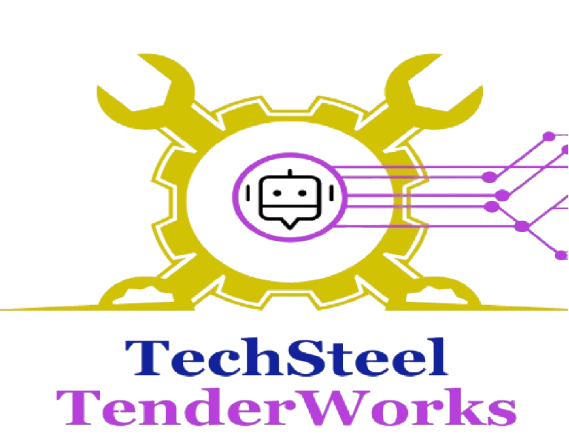Smart Safety - How AI is Revolutionizing Worker Protection on Construction Sites
Construction sites have historically been among the most dangerous work environments, with traditional safety measures often proving inadequate for preventing workplace injuries and fatalities. Artificial intelligence and smart technology integration are transforming construction safety from reactive incident response to proactive hazard prevention, creating safer work environments for steel structure contractors and their teams.
The Evolution of Construction Safety Technology
Conventional safety approaches typically rely on periodic inspections, manual monitoring, and reactive measures implemented after incidents occur. While these methods provide valuable protection, they often miss early warning signs of dangerous conditions or worker distress that could prevent accidents entirely.
AI-powered safety systems fundamentally shift this paradigm toward predictive and proactive protection. Smart wearables equipped with advanced sensors continuously monitor worker vital signs, location data, environmental conditions, and behavioral patterns, creating comprehensive safety awareness networks that operate 24/7.
Smart Wearables and Physiological Monitoring
Modern safety wearables integrate multiple sensor technologies to monitor worker health and safety conditions in real-time. Heart rate monitors, temperature sensors, accelerometers, and GPS trackers provide continuous physiological and location data that AI algorithms analyze for safety risks.
Heat stress prevention represents a critical application of smart wearable technology. AI systems analyze ambient temperature, humidity levels, worker exertion rates, and physiological responses to predict heat-related illness before symptoms become apparent. This early warning capability enables proactive interventions that prevent heat stroke and other temperature-related medical emergencies.
Fatigue detection through wearable sensors helps prevent accidents caused by worker exhaustion. Machine learning algorithms analyze movement patterns, reaction times, and physiological indicators to identify fatigue levels that increase accident risk. Supervisors receive alerts when workers show fatigue signs, enabling rest periods or task reassignments that prevent fatigue-related incidents.
Computer Vision and Hazard Identification
AI-powered computer vision systems analyze video feeds from construction sites to identify unsafe behaviors, missing personal protective equipment, or dangerous working conditions. Unlike human observers who may miss critical details or become fatigued during long monitoring periods, AI systems maintain consistent vigilance throughout entire work shifts.
Personal protective equipment (PPE) compliance monitoring through computer vision ensures workers consistently wear required safety gear. The system can identify missing hard hats, safety glasses, gloves, or reflective vests, automatically alerting supervisors to compliance issues before they result in injuries.
Behavioral safety analysis identifies risky work practices that increase accident probability. AI algorithms can detect unsafe lifting techniques, improper equipment usage, or workers entering restricted areas, enabling immediate corrective interventions.
Environmental Monitoring and Predictive Safety
Comprehensive environmental monitoring through AI provides real-time assessment of site conditions that affect worker safety. Air quality sensors detect dangerous gas concentrations, noise monitors identify hearing damage risks, and weather monitoring systems predict conditions that may increase accident probability.
Predictive safety analytics combine environmental data with historical incident patterns to forecast high-risk conditions. When AI systems identify environmental conditions that have previously correlated with accidents, they can recommend preventive measures or work modifications to reduce risk.
Structural monitoring through AI-powered sensors can detect vibrations, stress levels, or structural changes that indicate potential collapse risks. This monitoring is particularly important for steel structure projects where structural integrity directly impacts worker safety.
Emergency Response Coordination
AI systems enhance emergency response capabilities by automatically coordinating multiple safety systems when incidents occur. When wearable sensors detect falls, medical emergencies, or other safety incidents, AI algorithms can immediately alert appropriate personnel, provide precise location data, and coordinate response activities.
Automated emergency protocols can shut down equipment, evacuate areas, or activate emergency lighting systems based on incident severity and location. This rapid response capability can significantly reduce the severity of safety incidents by ensuring immediate, coordinated emergency response.
Training and Safety Culture Enhancement
AI analysis of safety performance data identifies knowledge gaps, skill deficiencies, or behavioral patterns that contribute to safety incidents. This analysis enables personalized training programs that address individual worker needs rather than generic safety education.
Safety culture assessment through AI monitoring helps identify teams or individuals who may benefit from additional safety training or behavioral interventions. Proactive safety culture development prevents incidents through improved awareness and behavior modification.
The future of construction safety lies in intelligent, interconnected systems that protect workers through predictive technology and proactive intervention, creating safer work environments for everyone.
TechSteel TenderWorks prioritizes worker safety through comprehensive AI-powered safety systems integrated into our steel structure tendering platform. Our smart safety solutions combine wearable technology, environmental monitoring, and predictive analytics to create proactive safety management systems that protect workers while enhancing operational efficiency for construction companies throughout Canada.
